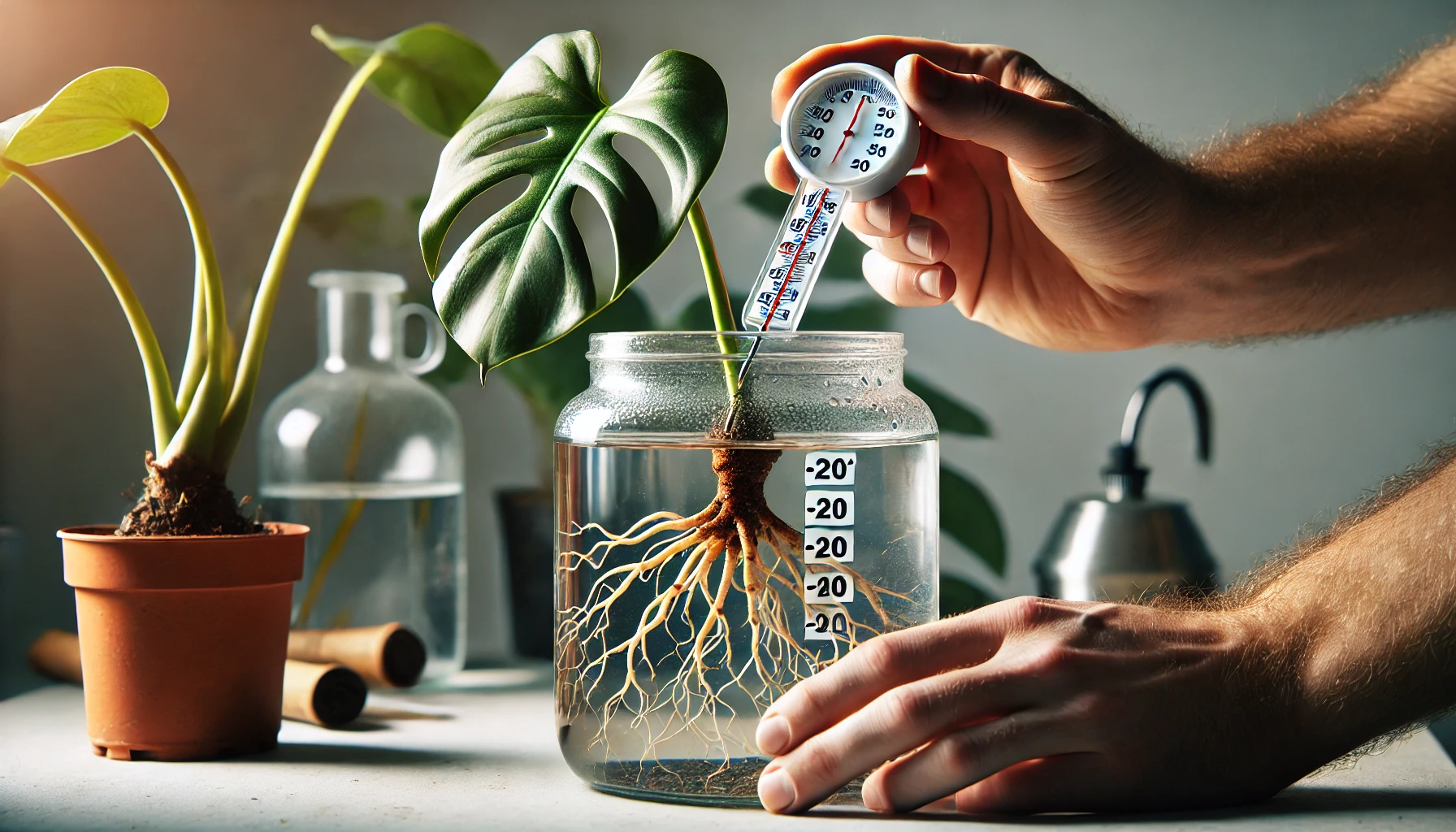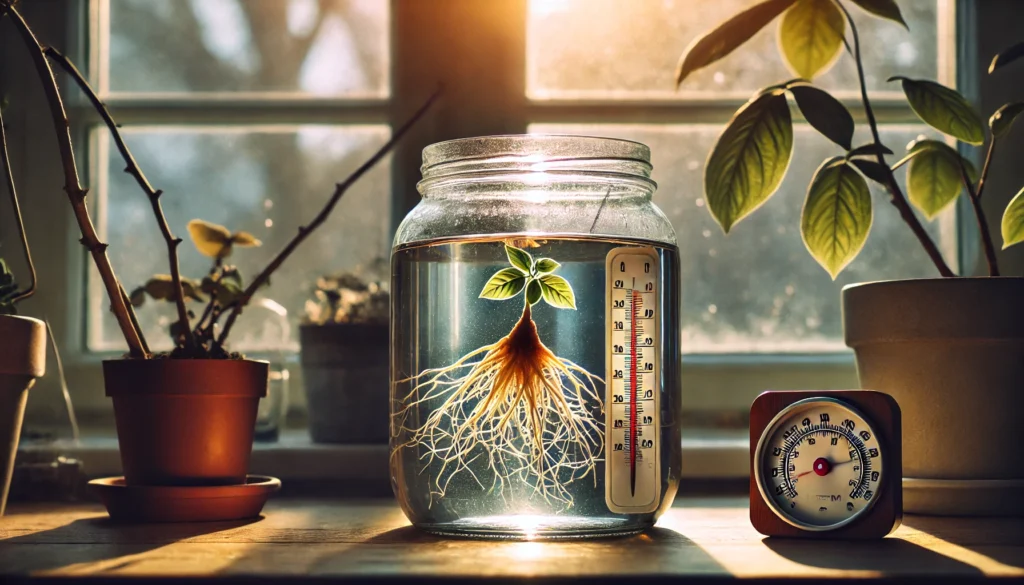
Water Temperature for Optimal Rooting: The Key to Successful Plant Propagation
When it comes to plant propagation, achieving the right conditions is crucial for success. One often overlooked factor that plays a significant role is water temperature for optimal rooting. Many gardeners don’t realize that the temperature of the water you use can directly impact the speed and health of root development. In this article, we’ll explore why water temperature matters, how it affects root growth, and how you can adjust it to ensure your cuttings thrive. Whether you’re a seasoned pro or a beginner, mastering this simple yet vital aspect of propagation will help your plants grow stronger and faster. Let’s dive in!
Table of Contents
ToggleUnderstanding Rooting and Its Connection to Temperature
When propagating vining plants, understanding the connection between rooting and temperature is crucial for success. Temperature directly impacts the rate at which roots form and how healthy they will be. Here’s a breakdown of why temperature matters and how to manage it for optimal results:
Why Temperature Affects Rooting
Roots form best when cuttings are kept in a warm environment. This is because warmth stimulates cellular activity, encouraging faster root development. However, too much heat can cause stress, while too little can slow down the rooting process. The ideal temperature range for most vining plants during rooting is between 65°F to 75°F (18°C to 24°C).
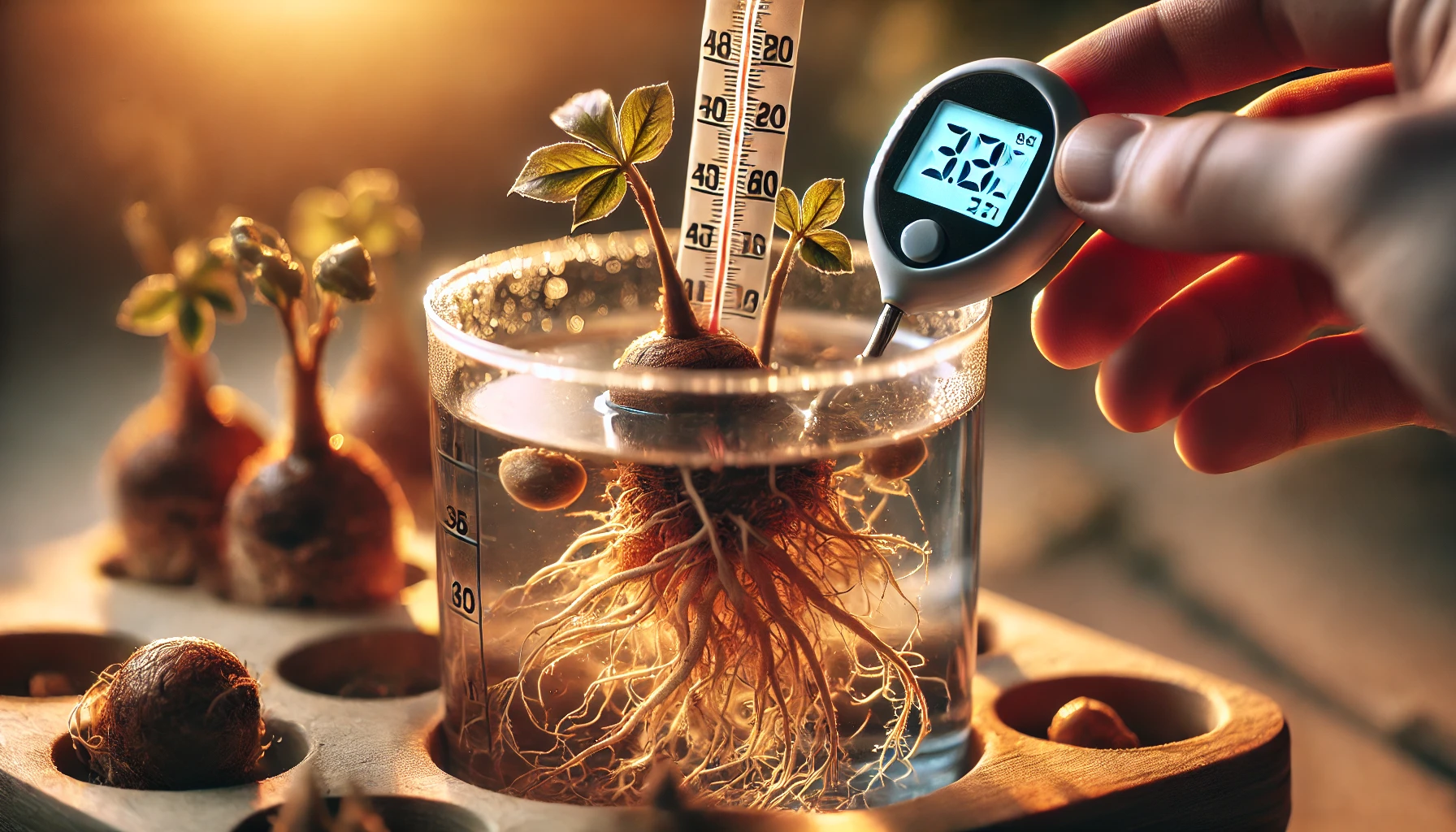
How to Maintain the Right Temperature
- Indoors: Place your cuttings in a warm area, like near a window with indirect sunlight or on a heat mat designed for plants.
- Avoid Extreme Temperatures: Keep cuttings away from drafty areas or places where temperatures fluctuate too much, such as near air conditioners or heaters.
- Monitor Soil Temperature: Use a soil thermometer to ensure the soil stays within the ideal range for rooting.
By understanding how temperature influences rooting, you can create an environment that encourages healthy, quick root development. Proper temperature control helps ensure your vining plant cuttings grow strong and establish roots quickly, setting the stage for successful propagation.
Ideal Water Temperature for Different Plants
Water temperature plays a crucial role in the health and growth of your plants. The right temperature ensures optimal water absorption and promotes strong root development. Here’s a quick guide to help you choose the perfect water temperature for different plants:
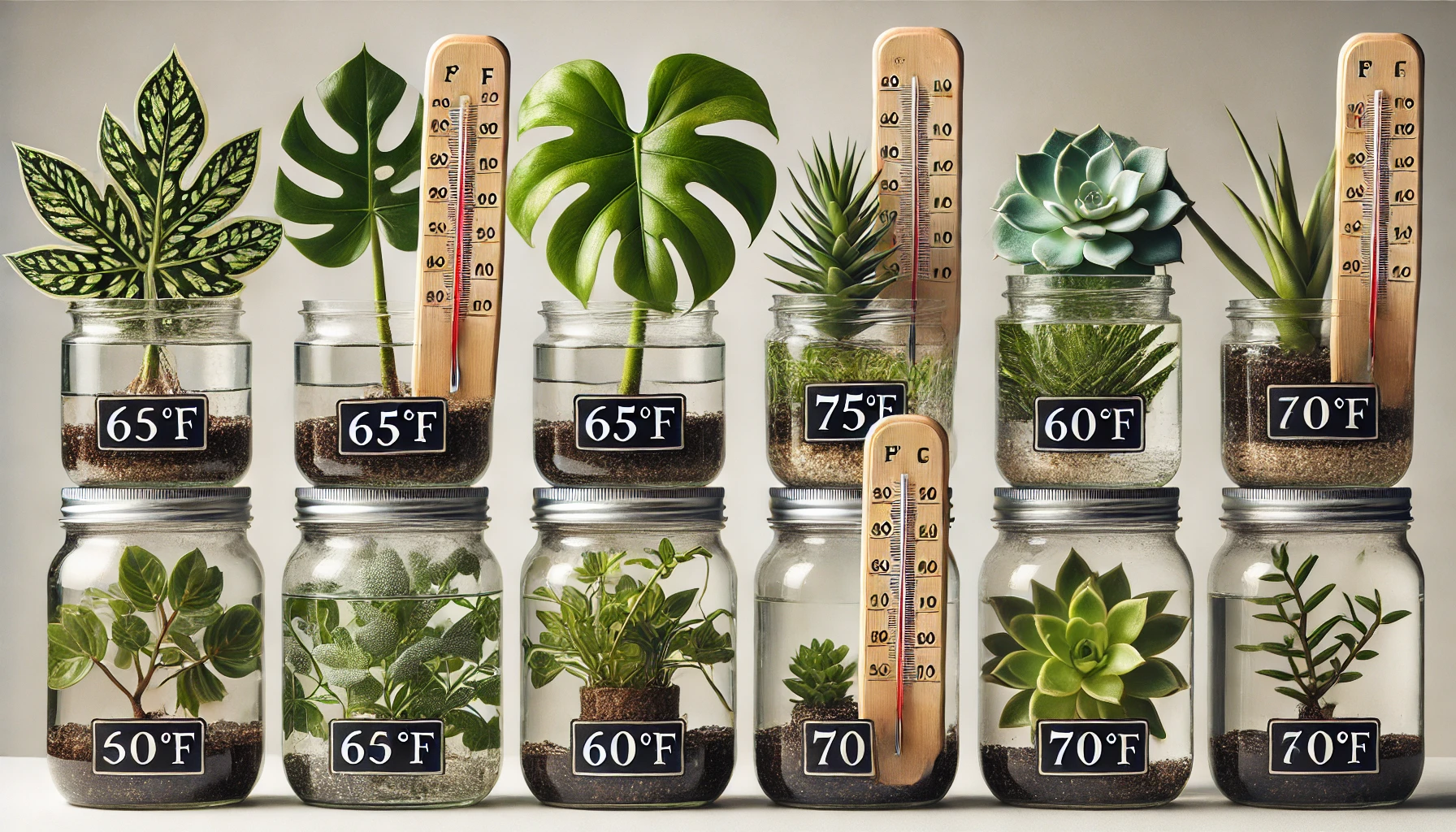
1. Tropical Plants (e.g., Pothos, Philodendron, Monstera)
Tropical plants thrive in warm, humid conditions. For these plants, use lukewarm water—around 65°F to 75°F (18°C to 24°C). Water that’s too cold can shock the roots, while water that’s too hot can cause stress.
2. Succulents and Cacti
Succulents and cacti prefer slightly cooler water than tropical plants. Aim for water at 60°F to 70°F (15°C to 21°C). Cold water, however, can slow their growth, so ensure the water is not icy.
3. Leafy Greens and Herbs (e.g., Lettuce, Basil, Mint)
Leafy plants and herbs, whether grown indoors or outdoors, prefer water around 65°F to 70°F (18°C to 21°C). This temperature range supports strong, vibrant growth without causing stress to delicate roots.
4. Orchids
Orchids, like Phalaenopsis, thrive best with water between 70°F to 80°F (21°C to 27°C). Too cold or too hot water can lead to wilting, so make sure to maintain a gentle, warm water temperature.
5. Ferns
Ferns, including Boston ferns and maidenhair ferns, enjoy water around 65°F to 75°F (18°C to 24°C). Consistently warm water promotes healthy growth and prevents shock.
6. Aquatic Plants
For aquatic plants, including water lilies and lotus, water temperature should be maintained between 70°F and 80°F (21°C to 27°C). This range supports healthy root systems and prevents algae buildup.
Quick Tips:
- Avoid Extremes: Cold or hot water can shock roots, stunting growth or causing damage.
- Room Temperature Water: If you’re unsure, room temperature water (around 68°F or 20°C) is usually safe for most plants.
- Consistency is Key: Try to water at a consistent temperature for the best results.
By understanding the ideal water temperature for different plants, you can ensure that your garden thrives. A little attention to water temperature can go a long way in maintaining healthy, vibrant plants.
How to Measure and Maintain Water Temperature
Water temperature is a crucial factor in plant propagation, as it directly affects the growth and health of your cuttings. Maintaining the right temperature helps speed up root development, while fluctuating or extreme temperatures can lead to slow growth or even failure. Here’s how to measure and maintain the ideal water temperature for your cuttings:
1. Ideal Water Temperature for Propagation
- The optimal water temperature for rooting most plant cuttings is between 65°F and 75°F (18°C to 24°C). This range encourages rapid root formation without stressing the plant.
- Temperatures outside this range can cause issues: too cold, and rooting may be slow; too hot, and the cutting may dry out or rot.
2. Measuring Water Temperature
- Use a digital aquarium thermometer or a submersible thermometer to accurately measure water temperature. These devices are affordable and easy to use.
- Simply place the thermometer in the water and wait for the reading to stabilize. It’s best to measure the temperature at the depth where the cutting is submerged to get the most accurate reading.
3. Maintaining Consistent Water Temperature
- Avoid direct sunlight on the water container, as this can cause temperature fluctuations. Instead, place the container in a location with indirect light.
- Use a water heater or heating mat for added warmth if your environment is cool. Just ensure that the temperature doesn’t exceed 75°F.
- For cooler conditions, place the container on top of a heating pad with an adjustable thermostat to maintain a steady warmth.
- Insulate the container if the environment is cold. Wrapping it in a cloth or placing it in a warmer spot can help prevent the water from getting too cold.
4. Monitoring and Adjusting
- Check the water temperature regularly, especially during the first few weeks of propagation.
- If the temperature deviates, adjust by moving the container to a warmer or cooler location or adjusting the heat source. Maintaining consistency is key to ensuring healthy root growth.
By keeping the water temperature within the ideal range and monitoring it closely, you’ll provide your cuttings with the best conditions for fast, healthy rooting.
Water Temperature vs. Air Temperature – What’s the Difference?
Understanding the difference between water temperature and air temperature is crucial for the health of your plants, especially when propagating vining plants from cuttings. While both temperatures play an important role, they affect your plants in different ways.
Water Temperature:
Water temperature is the temperature of the liquid in which your plant cuttings are submerged or watered. The ideal water temperature for rooting cuttings should be between 65°F and 75°F (18°C to 24°C). Water that’s too cold can slow down root development, while water that’s too hot can cause stress or even damage the cuttings. Always ensure the water is at room temperature before using it for cuttings.
Air Temperature:
Air temperature refers to the temperature of the surrounding environment where the cuttings are placed. For optimal rooting, the air temperature should be between 70°F and 80°F (21°C to 27°C). Warmer air helps the plant cuttings to thrive and root faster, but temperatures that are too hot can dry out the cuttings, reducing their chances of success.
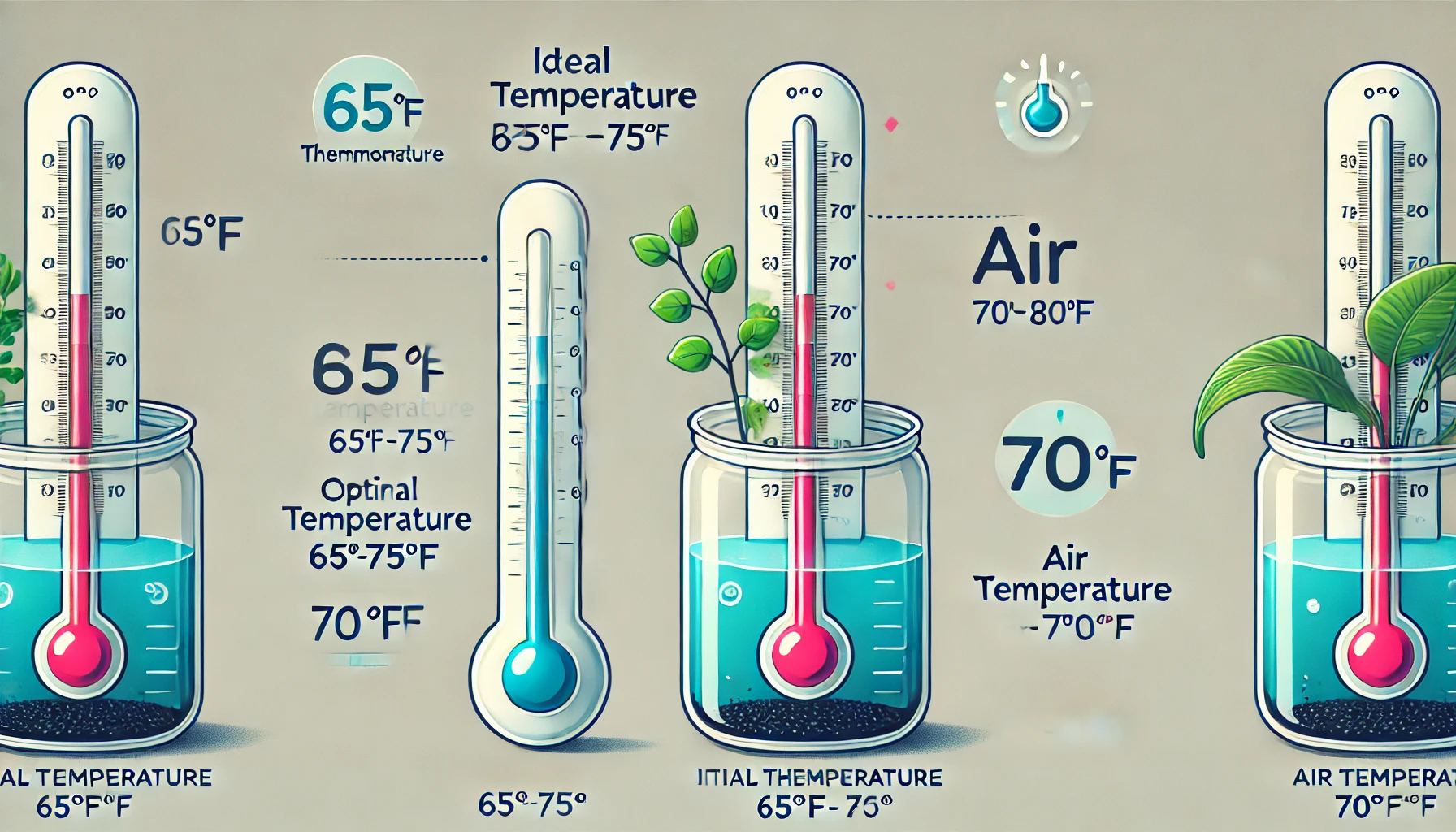
The Key Difference:
While water temperature primarily impacts root development, air temperature affects overall plant health and growth speed. Both need to be balanced for the best results. Always check that both the water and air temperatures fall within the ideal ranges for healthy propagation.
By maintaining the right water and air temperatures, you ensure that your plant cuttings have the perfect conditions to root and grow quickly.
Practical Tips for Success
To ensure your vining plant cuttings root quickly and thrive, follow these expert tips for success:
Use Sterile Soil for Rooting Cuttings
Always use sterile soil for rooting cuttings to avoid infections or diseases. Clean soil ensures your cuttings have the best environment to grow healthy roots.
Choose Healthy, Strong Cuttings
Select cuttings from healthy, pest-free plants. Look for stems with at least two nodes (the small bumps where leaves grow). Avoid older or diseased growth.
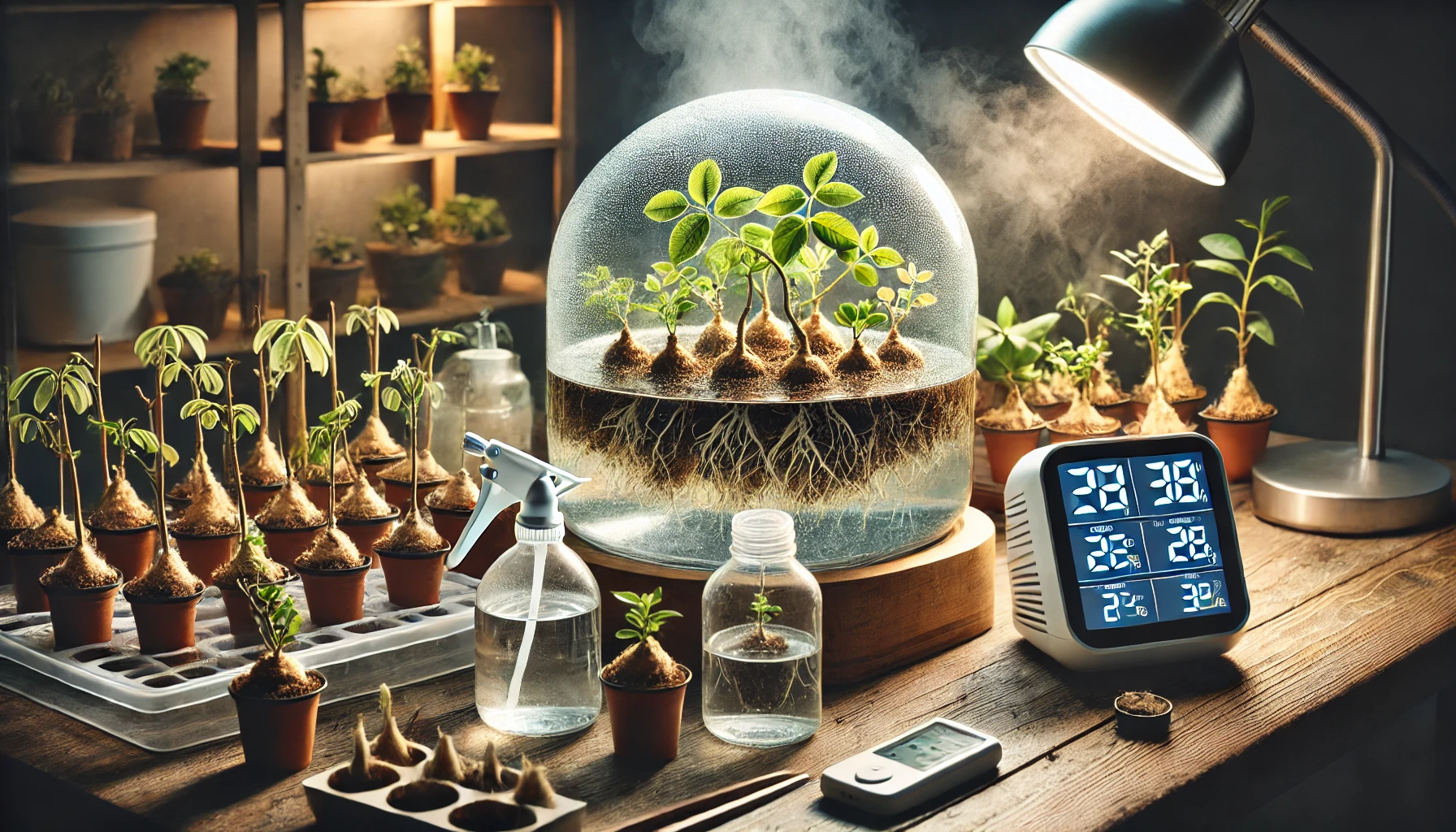
Create the Right Environment
Vining plants root best in warm, humid conditions. Place your cuttings in bright, indirect light, but keep them out of direct sunlight to prevent stress. Use plastic bags or a humidity dome to maintain moisture.
Keep Soil Moist, Not Soaked
Overwatering can lead to root rot. Ensure the soil is moist but well-draining. Use a spray bottle to lightly mist the cuttings if the soil seems too dry.
Patience is Key
Don’t rush the process. Rooting can take anywhere from a couple of weeks to a month, depending on the plant. Check for roots by gently tugging on the cutting; if there’s resistance, roots have formed.
Monitor and Adjust
Regularly check your cuttings for signs of stress, like wilting or yellowing. If you notice issues, adjust the light, humidity, or water levels accordingly.
By following these simple steps, you’ll increase your chances of successful, fast-growing vining plants.
Troubleshooting Common Temperature-Related Problems
Temperature plays a crucial role in the health and growth of your vining plants. If your plant isn’t thriving, it might be due to temperature stress. Here’s how to troubleshoot common temperature-related issues:
1. Leaves Wilting or Yellowing
- Cause: Extreme temperatures—either too hot or too cold—can cause stress to your plants, leading to wilting or yellowing leaves.
- Solution: Ensure your vining plants are in a spot where the temperature stays between 65-75°F (18-24°C). Keep them away from direct heat sources like radiators or air conditioners, and avoid placing them near cold drafts.
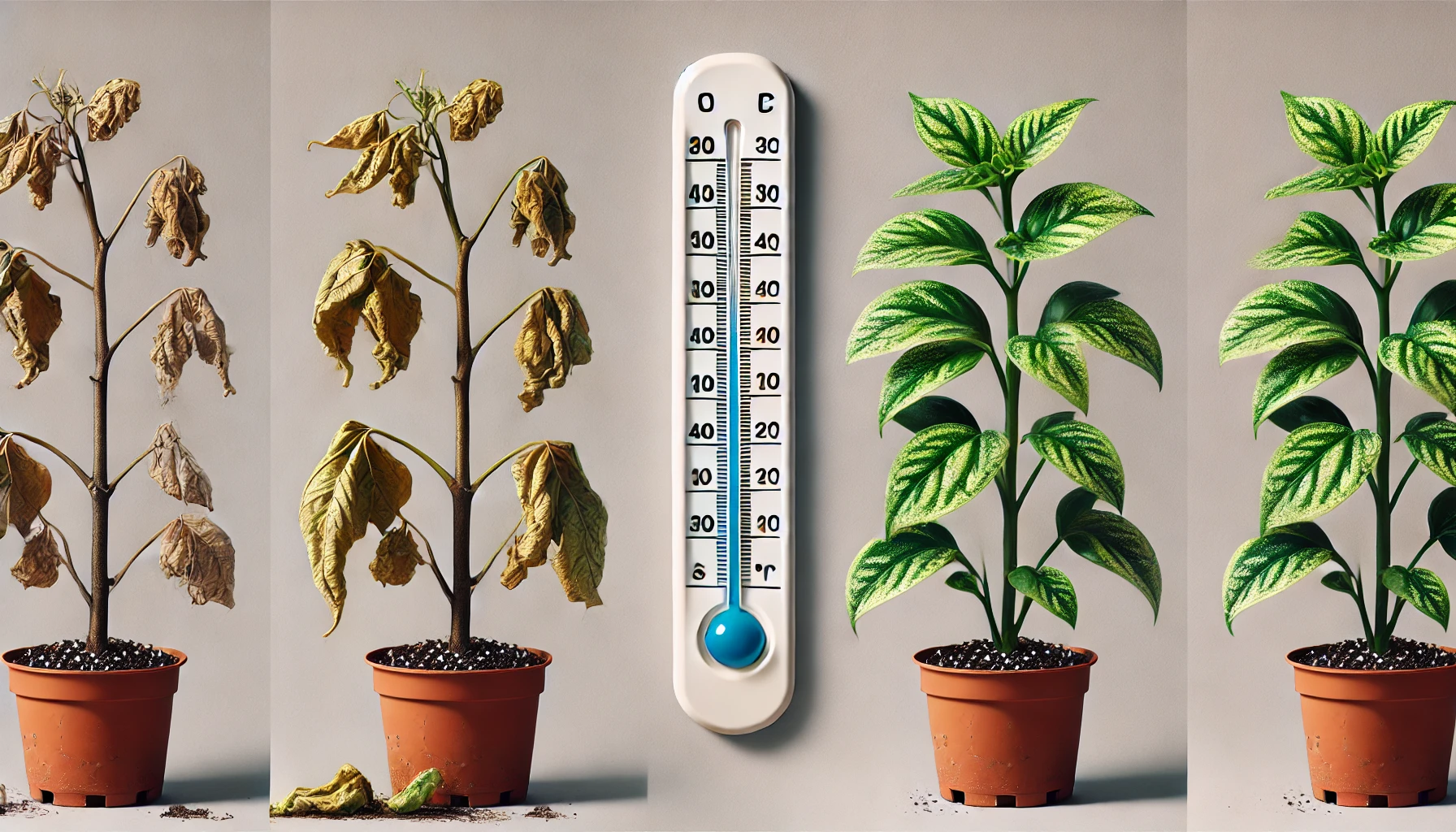
2. Stunted Growth
- Cause: If temperatures are too low, plants may stop growing altogether. This can happen if the room is too cool for your vining plant’s needs.
- Solution: Move your plants to a warmer spot or use a grow light to increase light and warmth. Most vining plants thrive in temperatures above 60°F (15°C), so keep them in an environment that suits their specific needs.
3. Leaf Burn or Brown Edges
- Cause: High temperatures combined with dry air can lead to leaf burn, especially if your plant is too close to a hot window or heating vent.
- Solution: Move the plant to a cooler, shaded area or increase humidity around the plant using a humidity tray or room humidifier. Avoid placing plants in direct sunlight during peak afternoon hours.
4. Sudden Leaf Drop
- Cause: Temperature fluctuations, such as moving a plant from a warm spot to a cold one, can shock the plant, causing it to drop leaves.
- Solution: Try to maintain consistent temperatures. If you need to move your plant, do so gradually to allow it to acclimate to the new environment.
By maintaining the right temperature for your vining plants, you can avoid these common issues and help them thrive. Always monitor your plants’ response to their environment, and make adjustments as needed to keep them healthy and happy.
In conclusion, maintaining the right water temperature for optimal rooting is a key factor in ensuring the success of your plant propagation efforts. As we’ve explored, different plants require specific temperature ranges to encourage healthy root growth, and understanding these nuances can significantly improve your results. By consistently monitoring and adjusting the water temperature, you’ll foster a conducive environment for cuttings to thrive and develop strong roots.
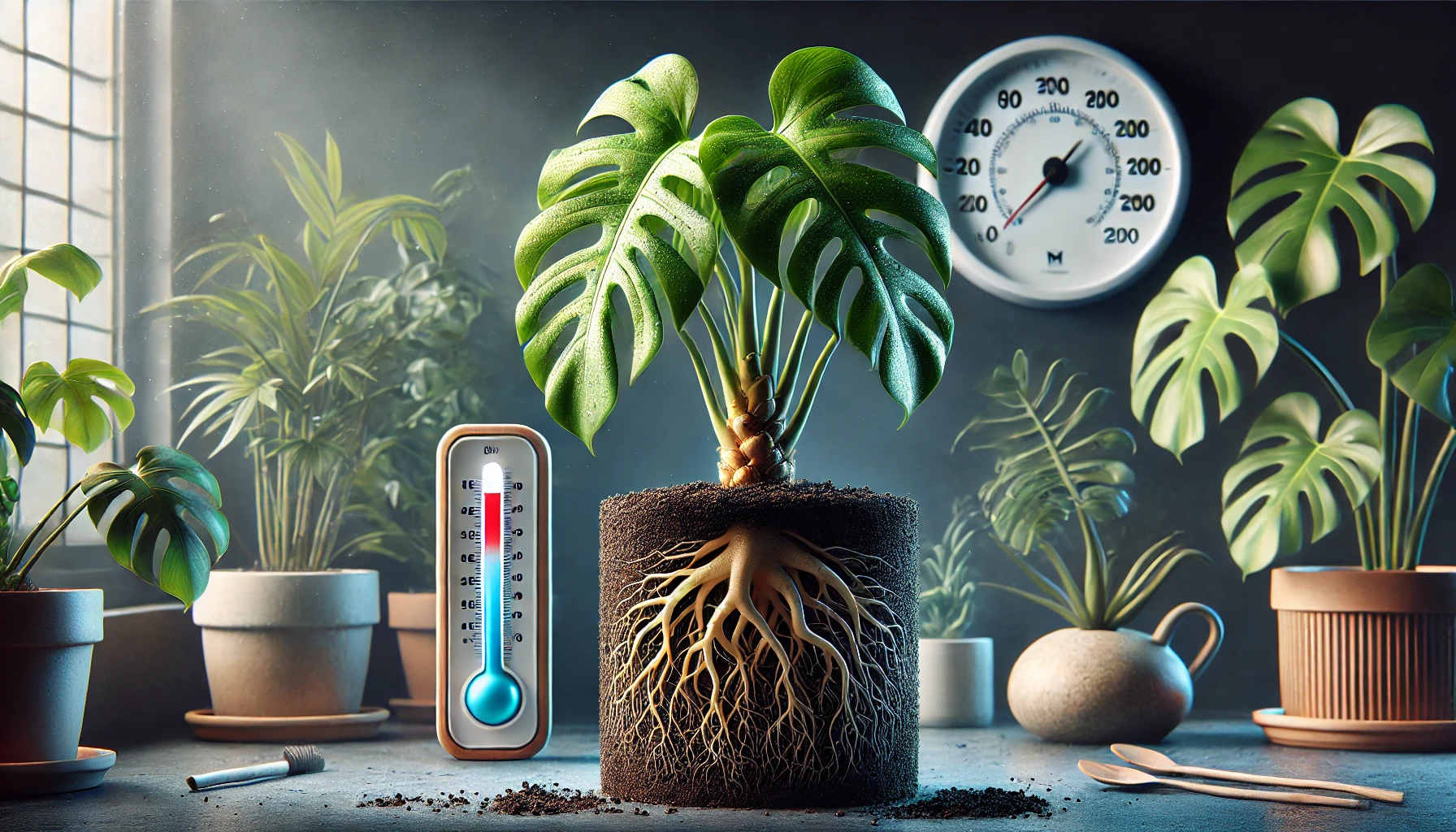
Remember, slight fluctuations in temperature can impact the rooting process, so take the time to measure and maintain ideal conditions. Whether you’re propagating tropical plants, shrubs, or succulents, a little attention to detail goes a long way in promoting lush, healthy growth. So, set the right temperature, and watch your plants flourish from cuttings into vibrant new additions to your garden or home!
Happy propagating!
Frequently Asked Questions(FAQ)
Why is water temperature important for rooting cuttings?
The right water temperature is crucial because it encourages faster root growth and helps avoid stress on the cutting. Water that is too cold can slow down root development, while water that is too hot can damage the cutting or promote rot. The ideal range is between 65°F and 75°F (18°C to 24°C).
What is the ideal water temperature for optimal rooting?
The optimal water temperature for rooting cuttings is typically between 65°F and 75°F (18°C to 24°C). This temperature range supports healthy root development without causing stress or rot.
Can cold water slow down rooting?
Yes, cold water can significantly slow down the rooting process. It makes the cutting’s metabolism sluggish, delaying root growth. To speed up rooting, ensure the water temperature is kept within the ideal range.
Is it okay to use hot water for rooting cuttings?
No, hot water is detrimental to cuttings. Water temperatures above 80°F (27°C) can cause the cutting to overheat, potentially leading to rot and failure to root. Always aim for a moderate temperature range of 65°F to 75°F (18°C to 24°C).
How can I check the water temperature when propagating cuttings?
You can use a simple thermometer to monitor the water temperature. It’s best to check the temperature regularly, especially if the water is in direct sunlight or near a heat source, as temperatures can fluctuate.
Does the type of plant affect the ideal water temperature for rooting?
While most plants thrive within the same water temperature range, some tropical plants may prefer slightly warmer water, while others, like succulents, may root better with slightly cooler temperatures. Always check the specific care needs of the plant you’re propagating.
Can I use a heated propagator to maintain the ideal water temperature for rooting?
Yes, using a heated propagator or a heat mat can help maintain a stable temperature for optimal rooting, especially in cooler environments. Just make sure the temperature doesn’t exceed the ideal range (65°F to 75°F), as it could harm the cuttings.
How often should I change the water when propagating cuttings?
Change the water every 2-3 days to keep it fresh and prevent bacteria build-up, which can contribute to rot. When changing the water, make sure to check that the water temperature is still within the optimal range.

